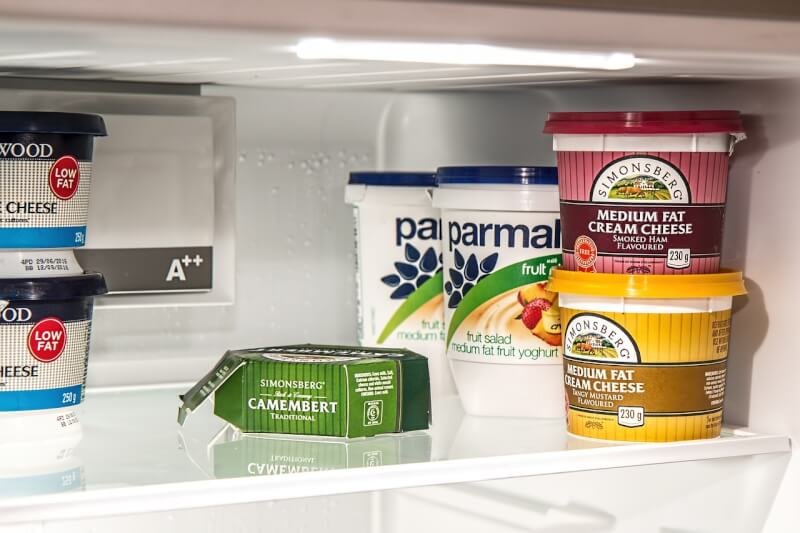Imagine having a perfectly organized food storage system, where you never have to worry about expired items or running out of essentials. With the concept of “Food Storage Rotation: First In,” you’ll learn how to create an efficient system that ensures the freshness of your stockpile. Discover the benefits of organizing your pantry, fridge, and freezer in a way that prioritizes the items you purchased first, allowing you to easily access and consume them before they expire. Get ready to simplify your life and never waste food again with this simple yet effective rotation method.

Importance of Food Storage Rotation
Ensuring Food Safety
Food safety is a crucial aspect of any food storage system. By implementing a proper rotation system, you can ensure that the food you consume is safe and free from any potential health risks. When food products are stored for extended periods without rotation, there is a higher chance of bacteria growth, spoilage, and contamination. By regularly rotating your food stock, you can minimize the risk of consuming expired or contaminated items.
Preventing Food Waste
Food waste is a significant issue in today’s world, and proper food storage rotation can help combat this problem. When food items are not rotated correctly, older products may go unnoticed, leading to them eventually going bad and being thrown away. By adopting a first in, first out (FIFO) practice, you can ensure that older items are used and consumed before their expiration dates, minimizing unnecessary wastage.
Maintaining Food Quality
Proper food storage rotation plays a crucial role in maintaining the quality and freshness of your food. Over time, food products may deteriorate in terms of taste, texture, and nutritional value. By regularly rotating your stock, you can ensure that you consume products at their peak quality, allowing you to enjoy the full flavor and nutritional benefits.
Establishing an Efficient System
Categorizing Food Items
To establish an efficient food storage rotation system, it is essential to categorize your food items systematically. This can be done by grouping similar food products together, such as canned goods, grains, dairy, and meats. By categorizing your inventory, you can easily identify and locate specific items when needed, further streamlining the rotation process.
Designating Storage Areas
Designating specific storage areas for different food categories can enhance the efficiency of your rotation system. Ensure that each storage area is clean, dry, and easily accessible. For example, allocate shelves or cabinets specifically for canned goods or allocate a refrigerated section for perishable items. This organization will help you keep track of your inventory and identify which items need to be used before others.
Labeling and Dating
Properly labeling and dating your food items is a critical step in food storage rotation. Clearly label each item with the date of purchase or expiration using waterproof markers or labels. Additionally, make sure to keep older items at the front of the shelf or storage area, making them easily accessible and reminding you to use them first.
First In, First Out (FIFO) Principle
Understanding FIFO
The First In, First Out (FIFO) principle is a widely adopted method in food storage rotation. It involves using the oldest items in your inventory before their expiration dates and consuming newer items later. By following this principle, you can ensure that your food is used and consumed in the order it was purchased or received, minimizing the chances of any item going to waste.
Benefits of FIFO
Implementing the FIFO principle in your food storage rotation offers several benefits. Firstly, it helps prevent any potential food waste by ensuring that older items are consumed before they expire. This not only reduces costs but also helps in managing inventory efficiently. Additionally, FIFO helps maintain the quality and freshness of your food, allowing you to enjoy the best taste and nutritional value of each item.
Implementing FIFO
Implementing the FIFO principle in your food storage rotation system requires discipline and consistency. As you purchase or receive new items, place them at the back of the storage area or shelf, ensuring that the older items are brought to the front. Make it a habit to rotate your stock regularly, checking expiration dates and using items that are nearing their expiration. By incorporating FIFO into your routine, you can effectively manage your food inventory and reduce waste.
Inventory Management
Regular Stock Checks
Regular stock checks are vital for effective food storage rotation. Set aside specific times to go through your inventory and check for any expired or soon-to-expire items. By doing this, you can identify items that need to be used promptly and plan your meals accordingly. Regular stock checks also enable you to keep track of your inventory levels, allowing you to make informed purchasing decisions.
Using Inventory Management Software
Utilizing inventory management software can greatly simplify and streamline your food storage rotation system. These tools provide a centralized platform to track and manage your inventory, including expiration dates, quantities, and locations. With automated reminders and alerts, you can ensure that you use items before they expire and efficiently plan your meals based on available stock.
Creating a Systematic Inventory
Creating a systematic inventory is crucial for efficient food storage rotation. This involves keeping detailed records of your stock, including quantities, purchase dates, and expiration dates. Organize this information in a spreadsheet or inventory management software and regularly update it as new items are added or used. A systematic inventory ensures that you have a clear overview of your food stock and allows for easier identification and rotation of items.

Proper Food Handling and Storage
Storing Food at Appropriate Temperatures
Proper temperature control is essential for maintaining the quality and safety of your food items. Different food categories require specific temperature ranges for optimal storage. Perishable items, such as meats and dairy products, should be stored in a refrigerator at temperatures below 40°F (4°C), while dry goods can be stored at room temperature. It is crucial to monitor and regulate the temperature of your storage areas to prevent spoilage and bacterial growth.
Using Proper Containers
Using appropriate containers for food storage is vital in ensuring its freshness and shelf life. Glass or plastic containers with airtight seals are ideal for preserving the quality of opened food products. Additionally, consider using transparent containers to easily identify the contents and expiration dates. For bulk items, consider using resealable bags or vacuum-sealing to prevent moisture and contamination.
Avoiding Cross-Contamination
Cross-contamination is a significant concern in food storage rotation. To prevent this, it is crucial to separate different food categories and store them in designated areas or containers. For example, raw meats should be kept separate from other items to avoid potential bacterial contamination. Additionally, make sure to clean and sanitize storage areas regularly to eliminate any potential sources of cross-contamination.
Factors Affecting Shelf Life
Temperature and Humidity
Temperature and humidity significantly impact the shelf life of food items. Higher temperatures can accelerate spoilage and bacterial growth, while excess humidity can lead to mold growth. It is important to store food items in cool, dry areas to prolong their freshness and prevent degradation.
Light Exposure
Light exposure can also affect the shelf life of certain food items. Direct sunlight or artificial light can degrade the quality of products such as oils, spices, and certain fruits. To prevent light-induced spoilage, store these items in opaque or dark containers and store them in areas away from direct light sources.
Quality of Packaging
The quality of packaging plays a crucial role in the shelf life of food items. Properly sealed and airtight packaging helps prevent moisture and air from entering, thus preserving the freshness and quality for a longer time. Choose products with intact packaging and avoid purchasing items with damaged or compromised packaging.

Checking for Signs of Spoilage
Inspecting Visual Appearance
Visual inspection is one of the simplest ways to determine if a food item has spoiled. Look for any visible signs of mold, discoloration, or unusual textures. For canned goods, check for bulging or dented cans. If any of these signs are present, it is best to discard the item to avoid consumption of spoiled food.
Testing Odor and Texture
Odor and texture can provide further indications of spoilage. If a food item emits a foul or off-putting odor that is different from its normal scent, it may have gone bad. Similarly, if the texture feels slimy, moldy, or significantly altered, it is a sign of spoilage. Trust your senses to determine if a food item is still safe to consume.
Utilizing Expiration Dates
Expiration dates serve as a helpful guide to determine the freshness and safety of food items. Pay close attention to these dates and prioritize the consumption of items that are nearing expiration. It is important to note that expiration dates are not always an exact indicator of spoilage, and visual inspection and other sensory checks should also be considered.
Benefits of a Well-Managed Food Storage Rotation
Reduced Food Costs
Implementing a well-managed food storage rotation system can significantly reduce food costs. By using items before they expire and minimizing waste, you can stretch your food budget and avoid unnecessary purchases. Additionally, proper rotation allows you to plan meals around expiring items, utilizing what you already have instead of constantly buying new groceries.
Increased Food Safety
A well-managed food storage rotation system ensures increased food safety. By consuming products in the order they were purchased or received, you minimize the risk of consuming expired or contaminated items. Regular stock checks and adherence to FIFO principles further enhance food safety by identifying and removing potentially harmful items from your inventory.
Improved Efficiency
Efficiency is a key advantage of a well-managed food storage rotation system. By establishing an organized inventory, categorizing items, and labeling and dating them properly, you can easily locate specific items when needed. This saves time and eliminates the frustration of searching for items, allowing for more efficient meal planning and preparation.

Challenges and Solutions
Limited Storage Space
Limited storage space can be a challenge when implementing a food storage rotation system. In such cases, it is essential to maximize the available space by utilizing storage containers, shelves, or cabinets effectively. Consider using stackable containers or investing in additional storage solutions, such as over-the-door racks or hanging shelves, to optimize the storage space you have.
Complex Food Storage System
A complex food storage system can also present challenges, especially when dealing with a wide variety of items. To overcome this, focus on simplifying the process. Categorize items broadly and avoid overcomplicating your inventory. Additionally, provide clear guidelines and training to everyone involved, ensuring that they understand the system and can easily follow it.
Education and Training
Education and training are crucial to the success of a food storage rotation system. Make sure everyone involved understands the importance of proper rotation and is familiar with the guidelines and procedures. Regularly communicate and provide training sessions to ensure that everyone is on the same page. By educating your team, you can create a culture of food safety and efficient rotation.
Tips for Effective Food Storage Rotation
Prioritize Proper Organization
Proper organization is key to effective food storage rotation. Maintain a clean and organized storage area, categorize items, and utilize labels and signs to enhance visibility and accessibility. Regularly rearrange items to ensure the first in, first out principle is followed, and eliminate any clutter that may hinder efficient rotation.
Regularly Check and Rotate Stock
Regularly checking and rotating stock is crucial for maintaining a well-managed food storage system. Set aside dedicated times to go through your inventory and identify items that need to be consumed soon. By developing a routine of regular stock checks, you can prevent any items from going bad and ensure that you utilize older products before newer ones.
Plan Meals around Expiring Items
One effective way to incorporate food storage rotation into your daily routine is by planning meals around expiring items. Take note of the items that are approaching their expiration dates and prioritize them in your meal planning. This not only reduces waste but also encourages creativity in the kitchen as you use ingredients that need to be consumed soon.
In conclusion, food storage rotation is of utmost importance for several reasons. It ensures food safety, prevents waste, and maintains the quality of the food we consume. By establishing an efficient system, adhering to the first in, first out principle, and utilizing proper handling and storage practices, we can reduce food costs, increase food safety, and improve overall efficiency. It is important to overcome any challenges and provide education and training to ensure the success of our food storage rotation system. By following these tips and guidelines, we can establish a well-managed rotation system that benefits both our wallets and our well-being.



